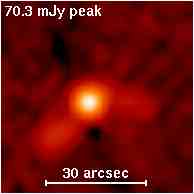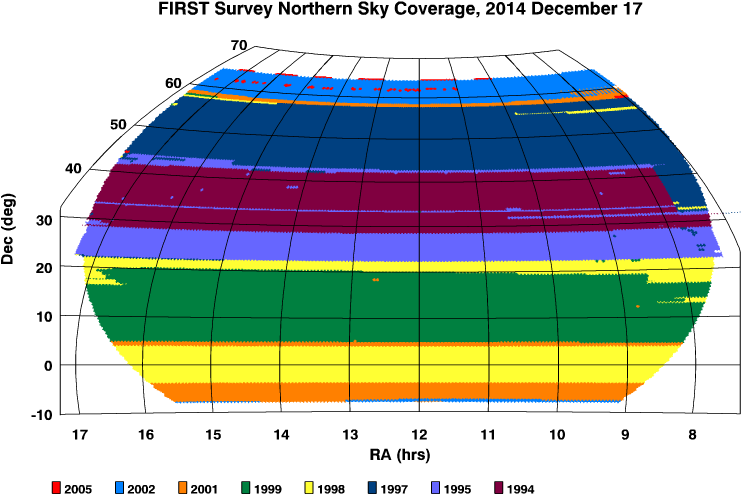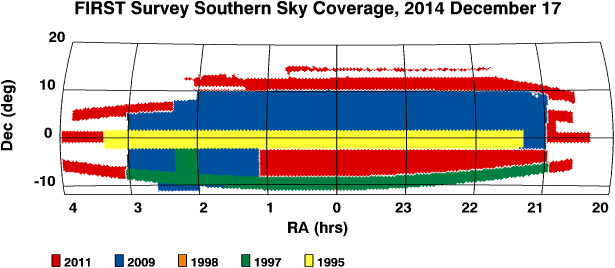

Data for the FIRST survey were collected in all VLA B-configurations from Spring 1993 through Spring 2004. For all data collected for the FIRST project, the raw u-v visibility data are placed in the VLA public archive on the day they are taken, and are available for use without restriction. Images and catalogs from the survey are made publicly available as soon as basic quality control checks have been done.
Additional data in the southern Galactic cap were acquired in Spring 2009 and Spring 2011. The VLA was in a hybrid condition in 2009, with some new EVLA receivers and some old VLA receivers. The characteristics of those images are slightly different from the older data, but for most purposes they should be equivalent. In 2011 the EVLA receivers were available with an early version of the new EVLA data system, so there are a number of differences from the old data:
| Date | Frequencies | Bandpass | Integration |
|---|---|---|---|
| Before 2011 | 1365, 1435 MHz | 2x7 3-MHz channels | 180 seconds |
| 2011 | 1335, 1730 MHz | 2x64 2-MHz channels | 60 seconds |
Note particularly the frequency difference between the new and older data. The new data are in coadded fields with names ending with 'S' (and later letters in the alphabet) and are found entirely in the south Galactic cap.
The catalog and images are now available for all data taken through 2011. Approximately 80% of the sky observed is in the north Galactic cap, and 20% is in the south Galactic cap. Both regions are covered by the Sloan Digital Sky Survey. The sky area covered is shown in the coverage maps below. The coverage in the southern Galactic cap is ragged (and non-contiguous) at the northern edge because poor weather and equipment failures prevented the planned survey area from being filled in there.
The images are available through various image archives. The images for all observations are conveniently accessible through the FIRST Cutout Page, which allows a section of a FIRST image to be extracted at any position in the survey area. Similarly, the catalogs are most easily used through the FIRST Search Page, but they may also be retrieved in their entirety through the Catalog Description Page.

